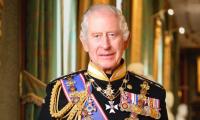Islamabad
As each year draws to an end, calendars for the New Year are in demand and a gift of a calendar is much appreciated, especially if it is as beautiful as the one the Japanese embassy sends out each year - each month features an Ikebana floral arrangement that is pleasing to the eyes!
Despite many people using their cell phones these days to check time; day and date, there is nothing like a beautiful calendar hanging on the wall, with the days marked clearly, which not only acts as a decoration but which can be used to mark your engagements and special occasions like birthdays etc: If you are a Facebook fan, you do not need this reminder as it sends you one but if you are ‘old-fashioned’ with ingrained habits, then a calendar is indispensable. Desk calendars are useful too but more for business persons or those who sit at their desks and want a quick reference to make appointments etc.
It takes months of planning to produce a calendar, get it printed and ready to be in the market well before the New Year, which is crucial if it is a commercial proposition or one used to raise funds for a project/cause. It should be available well in time so those who are looking for one can choose. It should be appealing and useful at the same time. In this respect the ASG calendar gets full marks as it is on sale when the ASG season opens in late September or early October. Prize winning photographs submitted by members are featured in this calendar, so those who win buy extra ones to send to family and friends, while members get them for self or to give as presents. If you are IT inclined you can use the Google calendar on your computer but I repeat there is nothing like a wall calendar – in sight and ready to consult/use!
Interesting facts: The term calendar is taken from calendae, the term for the first day of the month in the Roman calendar, related to the verb Calare ‘to call out,’ referring to the ‘calling’ of the new moon when it was first seen. Latin calendarium meant ‘account book/register’ (as accounts were settled and debts were collected on the end of each month). The Latin term was adopted in old French as calendier and from there in Middle English as ‘calender’ by the 13th century - the spelling ‘calendar’ is early modern.
The first calendar was made when Julius Caesar became ‘pontifex maximus.’ He reformed the calendar by getting rid of the intercalary months. The Julian calendar was created then completed during his successor Augustus' reign. The Gregorian calendar was introduced as a refinement of the Julian calendar in 1582 and is in worldwide use as the de facto calendar for secular purposes.1752 began on 1 January. To align the calendar in use in England to that on the continent, the Gregorian calendar was adopted and the calendar was advanced by 11 days - Wednesday 2 September 1752 was followed by Thursday 14 September 1752. The year 1752 was thus a short year (355 days).
There are over forty calendars currently in use and many others that have been used or have been invented. They thus come in many forms and may be divided into purely lunar calendars; purely solar calendars; lunisolar calendars and solilunar calendars. The Chinese name their years after an animal and this is the year of the monkey. It is also a Leap year in case you haven’t noticed!
Pilgrims pray around the Kaaba at the Grand Mosque, in Saudi Arabia's holy city of Makkah, during the annual Haj...
An aerial view of Islamabad is seen in this undated image. — X/@Islamabadies/File— the report that the historical...
This representational image shows a burger and chips. — Unsplash/FileIslamabad : As Pakistan finds itself in the...
Firefighters douse the fire at a shopping mall in Karachi on November 25, 2023. — AFPThe leading Emergency Service...
Pakistan Academy of Letters building seen in this image. — APP/FileIslamabad: The Pakistan Academy of Letters has...
A young boy is riding a motorcycle with his father seated with him on the way to a road in Lahore in November 19,...







